

| The Nautilus, shown below, is the last surviving genus of the nautiloids. Nautiloids are a group of marine animals which possess an external shell. Nautiloids have heads with well developed eyes and grasping tentacles. They swim by squirting water out from the body cavity. Essentially all that is known about the extinct nautiloids is based on what we learned from the modern Nautilus. | |
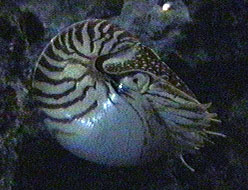 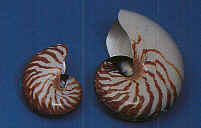 |
|
| Nautiloids first appeared in the Cambrian period,
some 570 million years ago, and flourished in the ancient seas of the Paleozoic
era. There are some 2,500 species of fossil nautiloids, but only
a handful of species survive to the present day. The nautiloids are
part of the group of animals called the cephalopods, which also includes
ammonoids and belemnites. The ammonoids, a group which includes the ammonites
and the goniatites, evolved from the nautiloids early in the Devonian period
some 400 million years ago. To learn more about ammonites and goniatites,
just click on the appropriate icon below.
|
|
| The cephalopods are an advanced class of a larger group
of animals called the molluscs, which includes bivalves and gastropods.
To learn more about bivalves and gastropods, just click on the appropriate
icon below.
|
|
 |
|
 |
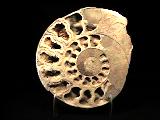 |
|
|
|
| Sutures are features found in the shells of all ammonoids. Sutures are visible as a series of narrow wavy lines on the surface of the shell, and they appear where each septa contacts the wall of the outer shell. The sutures of the nautiloids are simple in shape, being either straight or slightly curved, compared to the “zigzag” sutures of the goniatites and the highly complex sutures of the ammonites. | |
 |
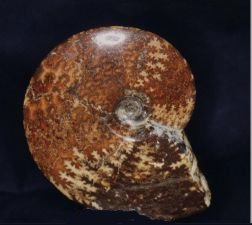 |
| The shells of fossil nautiloids may be either straight,
curved, coiled or in a helical coil. Some nautiloids lost their
coil and grew straight bodies. These include the Orthoceras
and the Rayonnoceras. They can be curved, such as Cyroceras; or coiled, as in Cenoceras. They can also be in a helical coil such as in Lorieroceras. Some shells are ornamented with spines and ribs, but most have a smooth shell.   |
|
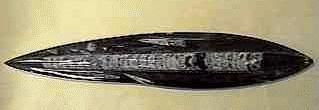 |
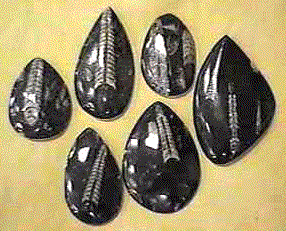
|
|
|
|
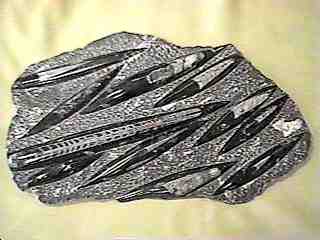 |
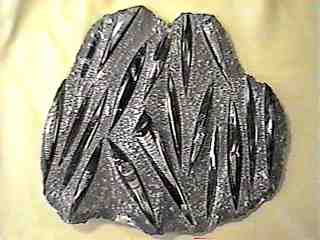 |
|
|
|
|
Nautiloids began to decline in both their numbers, and variety of species, in the upper part of the Paleozoic era. This decline continued throughout the Mesozoic and Cenozoic eras. Their shells became increasingly tightly coiled, and most of the more recent forms, differ slightly from the modern Nautilus. With the exception of a few species from the Triassic period, all of the nautiloids found after the Paleozoic era are coiled. In some localities, the shells of fossil nautiloids accumulated in such large numbers that they form Orthoceras limestones. Fossil nautiloids have a worldwide distribution up until the middle of the Cenozoic era, after which their geographic distribution shrinks, and their numbers decline to just four species. |
|